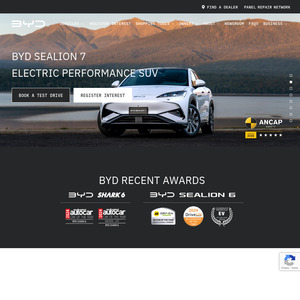$5k off the entire BYD range for the month of June.
List prices here: https://www.bydauto.co.nz/ (click vehicles and the one you are interested in)
Dealers are already starting to advertise these prices on trade me.
I think their most attractive vehicles are the Seal, Sealion 6 & 7 & Shark 6
Shark 6 at $65k + ORC is especially attractive. This is a 321 kW PHEV AWD ute, with 790kg payload, 2500kg tow rating. 5.7s 0-100 time, 10amp 230v power sockets, 100km EV range on the very easy NEDC test cycle. Kinda massive at 5.457mm long.
For comparison the yet to launch Ranger PHEV (much less powerful, and much less EV range, but more payload and tow rating) is prices at: $82,990 PHEV XLT, $89,990 PHEV Wildtrak, and $94,990 PHEV Stormtrack


Hope there is more to come. BYD did big drops in china last week, e.g. 20% off Sealion 7